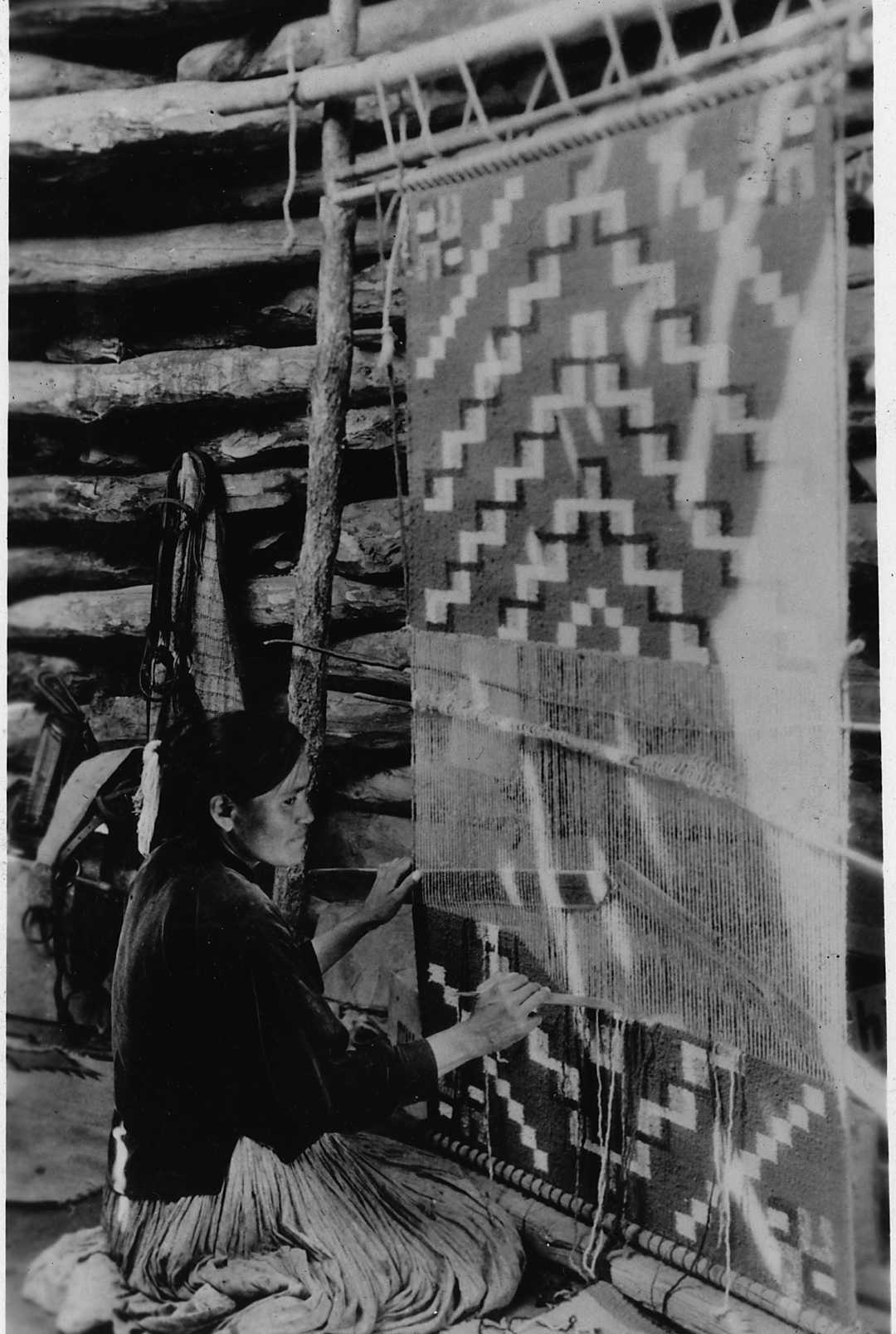Recently, I was able to tick one more item off of my list of “textiles to acquire” when I bought my very first Navajo rug. I found it at an estate sale, and the only information provided about the rug was a tag that said it was from the 1920s. The former historian in me carefully did my research on colors, design motifs, and general Navajo weaving of the 1920s and beyond in an attempt to learn as much as I could about the rug. I think it’s probably of the Klagetoh style, a style associated with the famous Hubbel Trading Post, but alas—any information about the weaver has been lost to time. I still treasure it, and I think about the weaver who made it and wonder about their weaving and their life.
Many of us in the weaving community love Navajo-style weaving. The beautiful geometric designs have become synonymous to many with the Southwest. It used to be that the people who bought these rugs and blankets from trading posts didn’t care about the weaver’s name—they wanted a genuine Navajo rug, and as long as the weaver was Navajo, that’s all that mattered. Today, thank goodness, this has changed as individual weavers are respected as artists in their own right as their work is displayed in ritzy art galleries and important museums alike.
Even so, it is all too easy to forget the reality in which many of these weavers—and basketmakers, beaders, and other native artists—live. While some do live in urban communities such as Santa Fe, Albuquerque, and Denver, many live on the Navajo reservation, a swath of land that spans parts of Utah, Arizona, and my state, New Mexico. Currently COVID-19 is sweeping through the Navajo Nation at an alarming rate. I know in New Mexico, half of all diagnosed cases are Native Americans, and most of those cases are on the Navajo Nation where not everyone has access to running water and where healthcare isn’t always easily accessible to those who live in remote, rural locations. Elders of the community, many of whom hold the knowledge of these traditional arts, are high risk for contracting the virus and suffering the worst of the symptoms. Fortunately, there is much we can do to help.

A Navajo weaver sits at her loom, in the process of weaving a rug. Though much has changed since this photo was taken in 1933, the talent and skill of Navajo weavers remain the same. Photo courtesy of the National Archives Catalog
Buy From an Artist
Throughout everything, weavers are still weaving, and rugs and other weavings are still being sold. Purchasing a rug—or a loom or a book—from a reputable source helps to put money in the pockets of weavers who can use it to buy food, bleach, and other supplies to keep them safe and healthy. Best of all, because of the wonders of the Internet, you can buy a beautiful, one-of-a-kind weaving from the safety of your home. I highly suggest checking out the rugs sold by Adopt A Native Elder where 100 percent of the proceeds go back to the weaver. Weaving in Beauty Mercantile (a name familiar to most weavers who have an interest in Navajo looms, yarns, and weaving styles) also offers Navajo rugs and looms as well as publications by Navajo authors on the subject of weaving.
Adopt an Elder or Buy a Grandma Basket
Adopt a Native Elder does more than just sell rugs—the organization raises money to provide elders in the Navajo Nation with food and other supplies. You can choose to donate money, to purchase specific items for an elder—including weaving yarn—or choose to “adopt” an elder and provide continuing support through donations of food and other supplies. The Rocky Ridge Gas + Mart is also offering folks the opportunity to purchase “Grandma Baskets”: preselected bundles of food and other supplies priced between $20 and $45 that are packaged for easy pick-up and then given away to elders in the community.
Give Money
If you’d rather donate money and let somebody designate where it goes based on need, there are opportunities for that, as well. The folks behind Weaving in Beauty Mercantile are working with Sheri Burnham of the RB Burnham and Company Trading Post to raise money on Go Fund Me for the Manuelito Navajo Children’s Home and putting together food and supply baskets for the elders in Gallup and Sanders, Arizona. The Navajo & Hopi Families COVID-19 Relief organization is a grass roots native group working to bring food and supplies to elders and families throughout the Navajo Nation and the Hopi Reservation.
Many beloved weavers, basketweavers, beaders, and other artists throughout the Navajo Nation are currently under threat, but we can help support them and other elders through this difficult time. And, someday when this is over, I dream of visiting one of the famous trading posts and buying a new weaving (one with the name of the artist attached).
Christina

